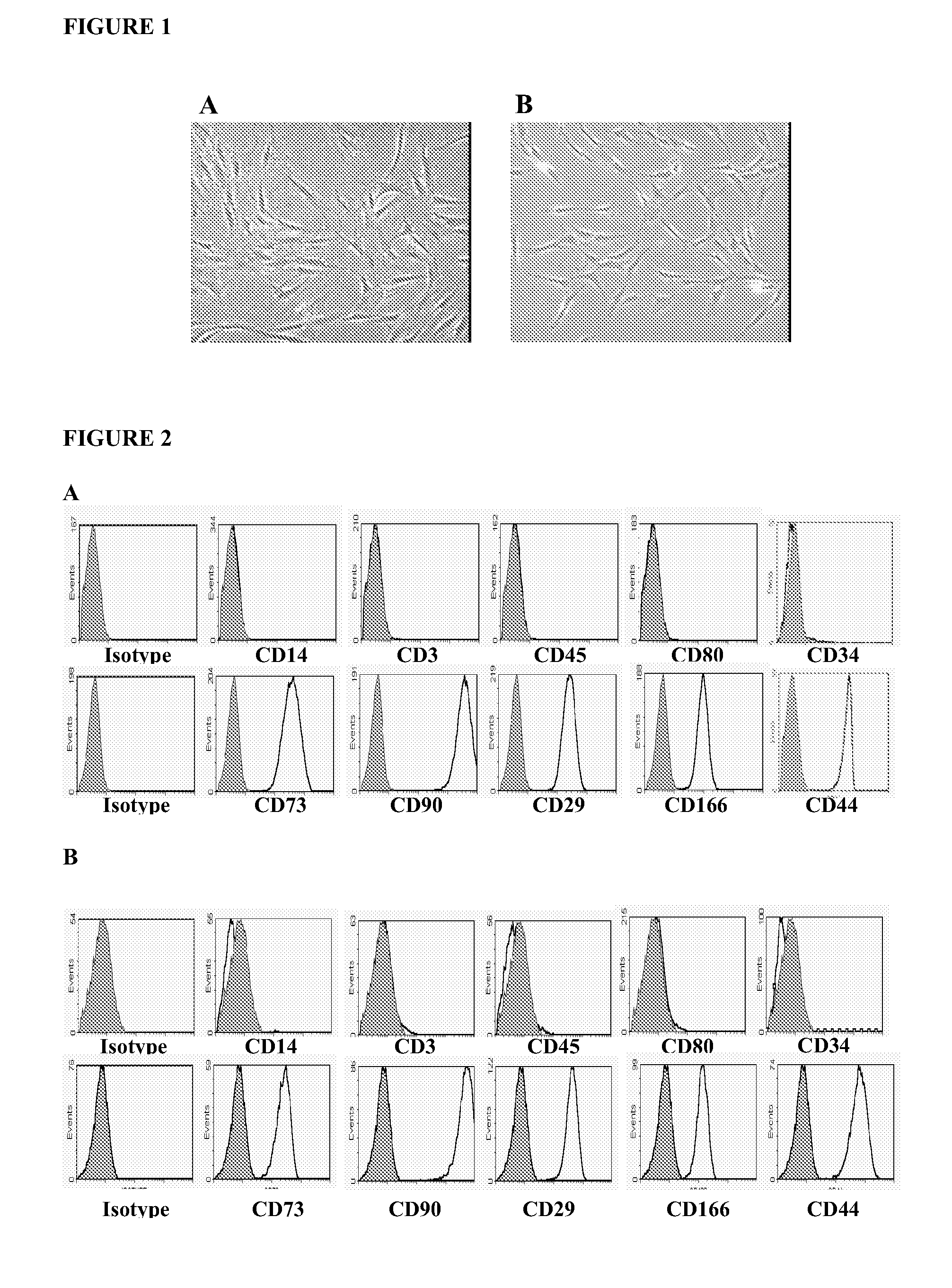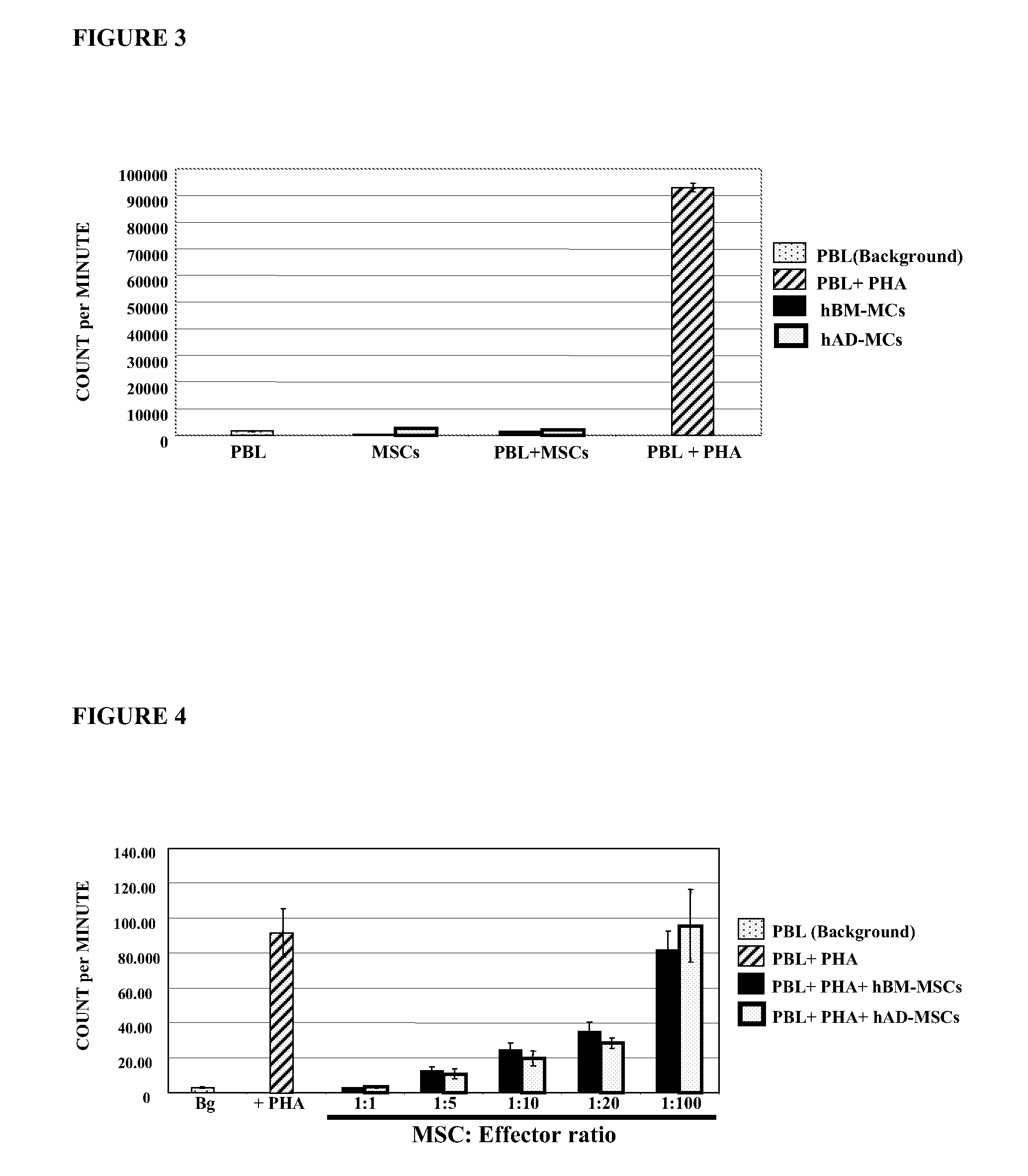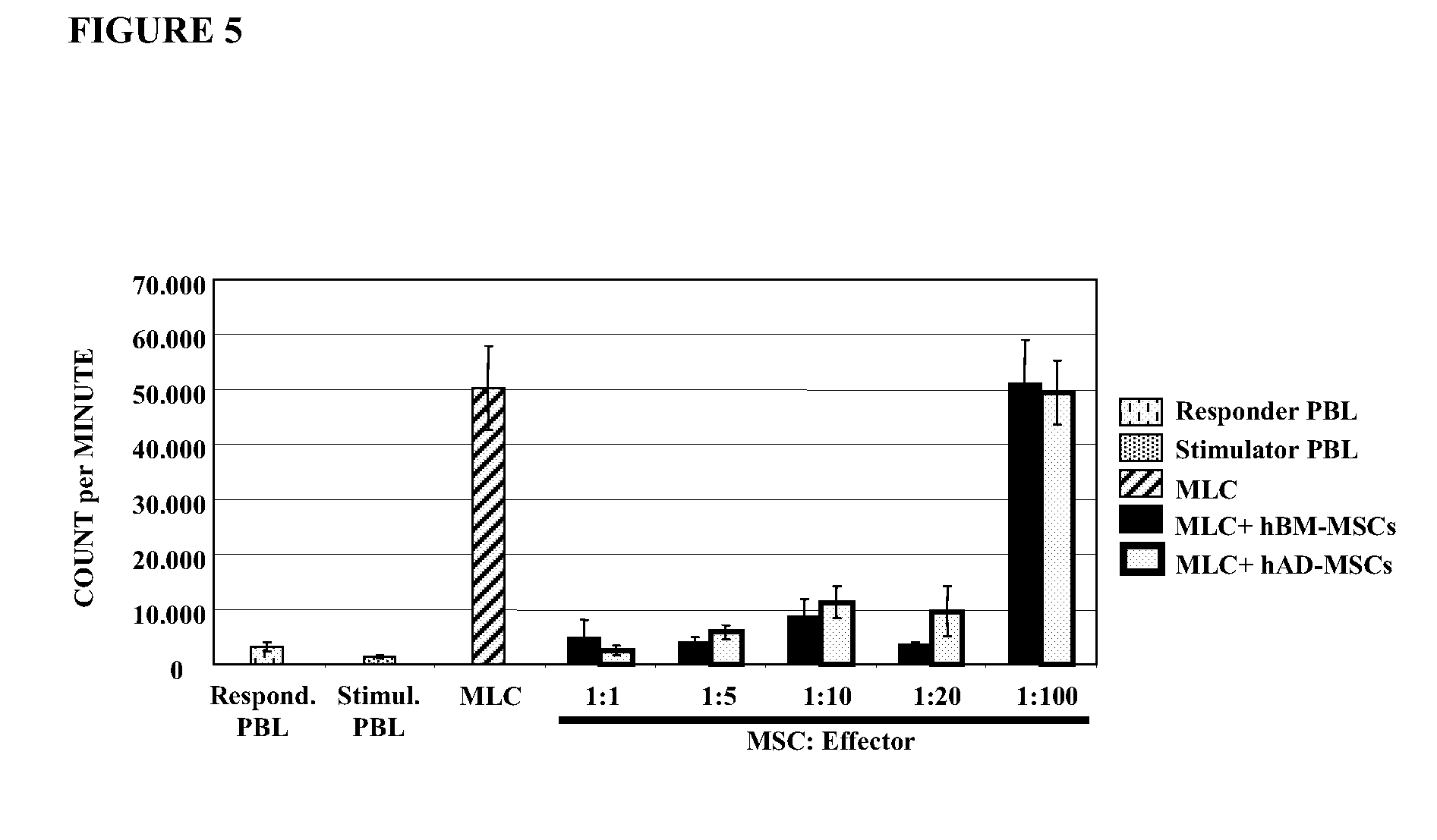Method of treating graft versus host disease using adipose derived mesenchymal stem cells
a mesenchymal stem cell and graft technology, applied in the field of graft versus host disease treatment using adipose derived mesenchymal stem cells, to achieve the effects of reducing mortality, improving in vitro proliferative potential, and mildew
- Summary
- Abstract
- Description
- Claims
- Application Information
AI Technical Summary
Benefits of technology
Problems solved by technology
Method used
Image
Examples
example 1
Isolation, Expansion and Characterization of Human Mesenchymal Stem Cells
Adipose Tissue-Derived Mesenchymal Stem Cells (hAD-MSCs) and Bone Marrow-Derived Mesenchymal Stem Cells (hBM-MSCs)
1.1 Isolation and Ex Vivo Expansion of Human Adipose Tissue-Derived Mesenchymal Stem Cells (hAD-MSCs)
Isolation of Human Adipose Tissue-Derived Mesenchymal Stem Cells (hAD-MSCs)
[0077]Human adipose tissue was obtained by liposuction, under local anaesthesia and general sedation. A hollow blunt-tipped cannula was introduced into the subcutaneous space through a small incision (less than 0.5 cm in diameter). With gentle suction, the cannula was moved through the adipose tissue abdominal-wall compartment for mechanical disruption of the fatty tissue. A saline solution and the vasoconstrictor epinephrine were injected into the adipose tissue compartment to minimize blood loss. In this way, 80-100 ml of raw lipoaspirate was obtained from the human being so treated.
[0078]The raw lipoaspirate was washed exte...
example 2
Human Adipose Tissue-Derived Mesenchymal Stem Cells (hAD-MSCs) are Non-Immunogenic
[0112]In order to investigate whether or not hAD-MSCs induce a proliferative response into allogeneic lymphocytes, 10,000 peripheral blood lymphocytes (PBLs), were cultured with different numbers of hAD-MSCs (Example 1). Similar experiments were conducted with hBM-MSCs (Example 1). PBLs were obtained by Ficoll-Hypaque density gradient from heparinized peripheral blood samples of the healthy donors. 105 hAD-MSCs and 105 PBLs, were cultured in complete medium at 37° C., 5% CO2 for 3 days. Similarly, 105 hBM-MSCs and 105 PBLs, were cultured in complete medium at 37° C., 5% CO2 for 3 days. PBLs cells were cultured in RPMI-1640 supplemented with penicillin, streptomycin, L-glutamine and 10% heat-inactivated fetal bovine serum. As a proliferation control, 1×105 PBLs in 200 μl were incubated with phytohaemagglutinin (PHA), at a final concentration of 10 μl / ml. 1 μCi of thymidine was added to each well 18 hour...
example 3
Human Adipose Tissue-Derived Mesenchymal Stem Cells (hAD-MSCs) Induce Immunosuppressive Effects In Vitro
[0113]In a first set of experiments, the in vitro immunomodulatory effects of hAD-MSCs (Example 1) was examined by evaluating the influence of said cells to modulate the proliferative response of human PBLs (Example 2) to phytohaemagglutinin (PHA) stimulations PBLs were obtained by Ficoll-Hypaque density gradient from heparinized peripheral blood samples of the healthy donors. Separated cells were cultured in RPMI-1640 supplemented with penicillin, streptomycin, L-glutamine and 10% heat-inactivated fetal bovine serum. For mitogenic stimulation. 1×105 PBLs in 200 μl were incubated with phytohaemagglutinin (PHA), at a final concentration of 10 μl / ml. AD-MSCs were added in diminishing concentrations, at the beginning of the culture. 1 μCi of thymidine was added to each well 18 hours before harvesting. The cells were harvested on day 3. Thymidine incorporation was measured by β-liquid...
PUM
| Property | Measurement | Unit |
|---|---|---|
| diameter | aaaaa | aaaaa |
| pore size | aaaaa | aaaaa |
| pharmaceutical composition | aaaaa | aaaaa |
Abstract
Description
Claims
Application Information
 Login to View More
Login to View More - R&D
- Intellectual Property
- Life Sciences
- Materials
- Tech Scout
- Unparalleled Data Quality
- Higher Quality Content
- 60% Fewer Hallucinations
Browse by: Latest US Patents, China's latest patents, Technical Efficacy Thesaurus, Application Domain, Technology Topic, Popular Technical Reports.
© 2025 PatSnap. All rights reserved.Legal|Privacy policy|Modern Slavery Act Transparency Statement|Sitemap|About US| Contact US: help@patsnap.com



